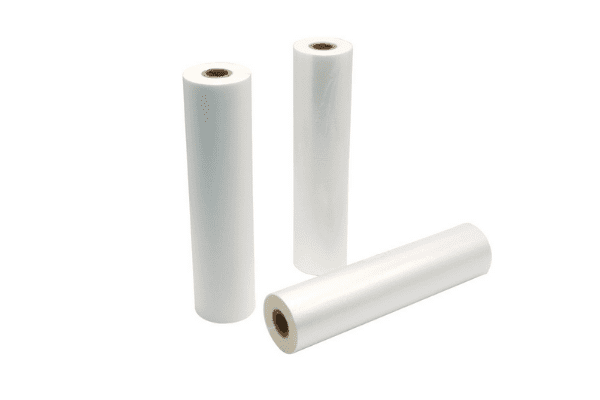What is a pre-coated film?
Pre-coated film refers to the process of pre-gluing and rewinding the plastic film, and then compounding it with the paper printed product. First, the pre-coated film processing plant will apply the glue on the film and rewind the film according to the specifications and size of the film for the user to choose, and then composite with the printed matter. Laminating, that is, lamination, is the processing technology of coating plastic film with adhesive and bonding it with paper printed matter after heating and pressing to form a paper-plastic product. The coated printed matter has an extra layer of thin and transparent plastic film on the surface, which makes the surface smoother and brighter, thereby improving the gloss and fastness of the printed matter. The graphics and text are brighter in color, rich in three-dimensional effect, and waterproof, Antifouling, abrasion resistance, folding resistance, chemical corrosion resistance, etc.
The pre-coated film is composed of a substrate and an adhesive layer. The substrate is usually a polyester (PET) film and a biaxially oriented polypropylene (BOPP) film.
1.BOPP pre-coated film
Pre-coated film refers to the process of pre-gluing and rewinding the plastic film, and then compounding it with the paper printed product. First, the pre-coated film processing plant will apply the glue on the film and rewind the film according to the specifications and size of the film for the user to choose, and then composite with the printed matter.
Laminating, that is, lamination, is the processing technology of coating plastic film with adhesive and bonding it with paper printed matter after heating and pressing to form a paper-plastic product. BOPP pre-coated film is a composite film made of polypropylene film and EVA hot melt adhesive to form a laminate structure. It has unique properties, which can improve the shortcomings of ordinary polypropylene film and give play to the superior performance of polypropylene film.
Advantages:
1) Lightweight, with a density of 0.91g/cm2, it is one of the lightest plastic films and can float on water.
2) Good heat resistance, which is an excellent performance that thermoplastics do not have.
3) Good chemical stability, acid resistance, alkali resistance, oil resistance, moisture-proof and waterproof barrier properties.
4) It is non-toxic, odorless and tasteless. Like polyethylene, it is recognized as the best material for food packaging in the world.
5) High transparency, good gloss, especially suitable for internal printing, good printing adaptability
Disadvantages:
1) The oxygen barrier is poor, and it is easy to age when exposed to sunlight.
2) The low temperature resistance is poor, and the texture becomes brittle at low temperature.
3) When used for printing, it must be corona treated on the surface (surface tension greater than or equal to 38mN/m) to get better results.
4) High static electricity, if there is no antistatic device, antistatic agent needs to be added during production.
PET pre-coated film
PET pre-coated film is a composite film formed by a laminate structure of polyester film and EVA hot melt adhesive. It has excellent composite properties and can be laminated without affecting the superior performance of PET pre-coated film.
The original name of polyester: polyethylene terephthalate, with the following properties:
1) The mechanical strength is high, and its tensile strength is about 5-10 times that of polyethylene. Therefore, the 12mic PET film has been widely used, and the 9mic ultra-thin PET film has also begun to be used. In addition, the polyester film has high stiffness. And strong impact resistance.
2) Good heat resistance, with a melting point of 260°C and a softening point of 230~240°C. Even if the biaxial stretching process is adopted, its thermal shrinkage rate is still very small at high temperatures, and it has extremely good dimensional stability. Time heating still does not affect its performance.
3) Good oil resistance, chemical resistance, not easy to dissolve, good acid corrosion resistance, resistance to organic solvents and oils, but it is easy to deteriorate when exposed to strong alkalis.
4) It has excellent gas barrier properties and good odor barrier properties.
5) The barrier performance to water vapor is not as good as polyethylene and polypropylene.
6) The transparency is high, the light transmittance is above 90%, the gloss is good, and the printing performance is good.
7) Prevents poor UV penetration.


